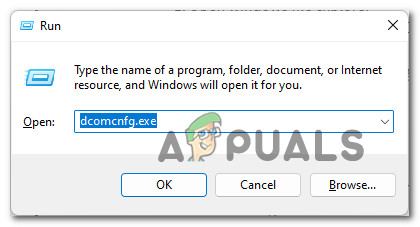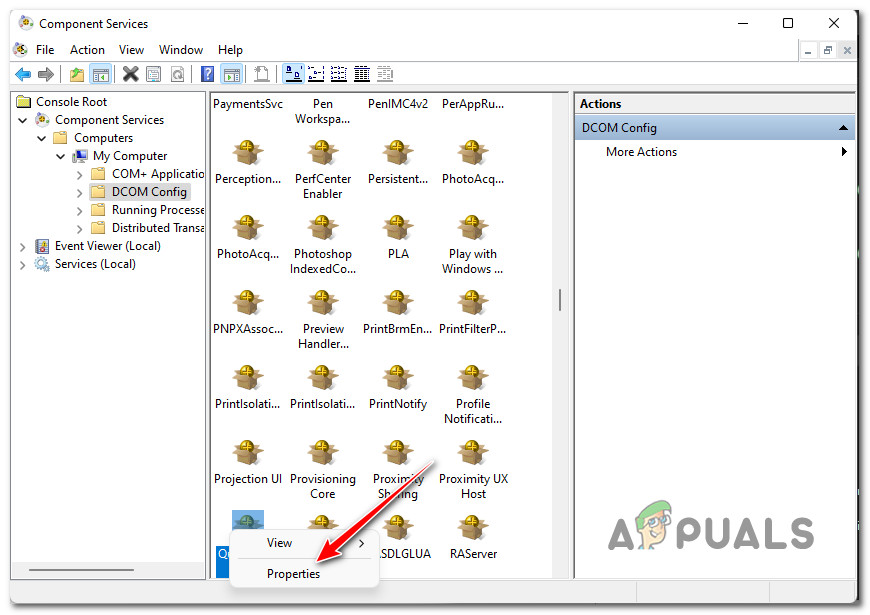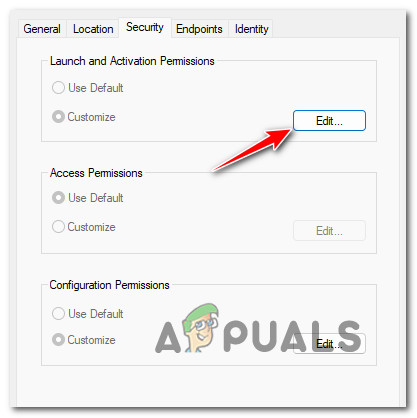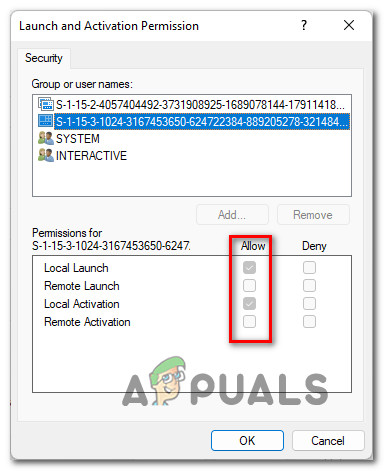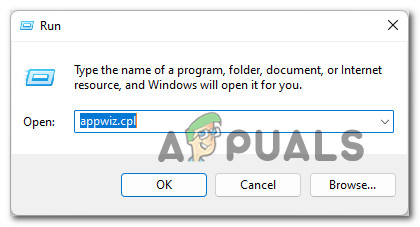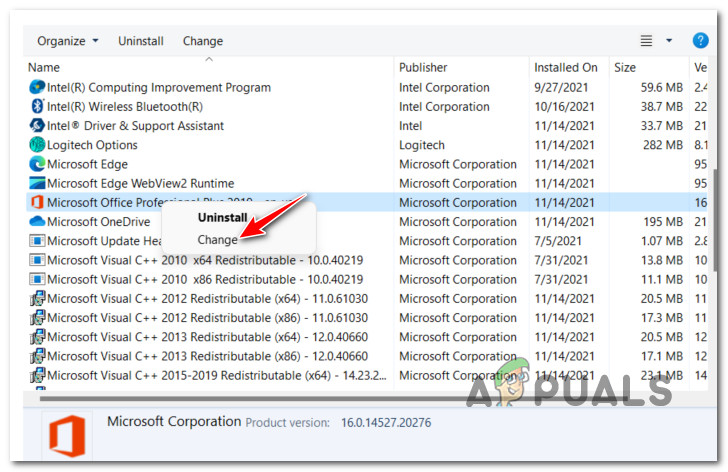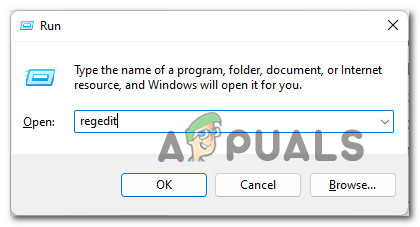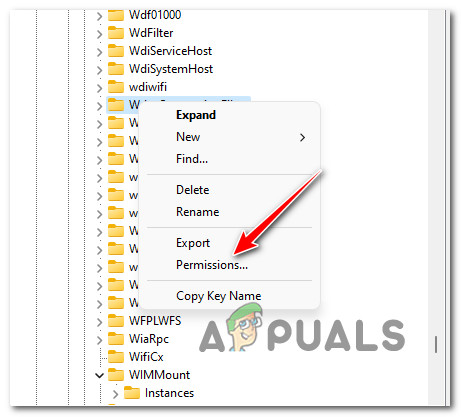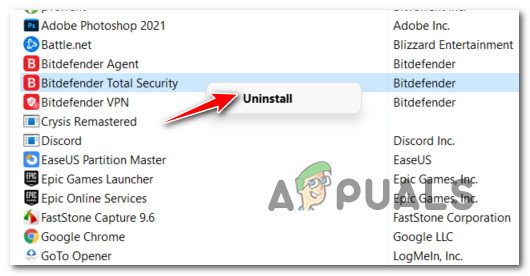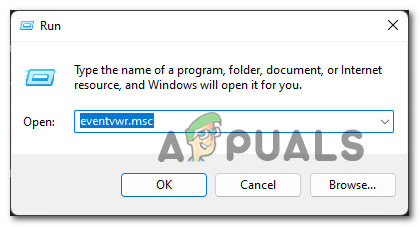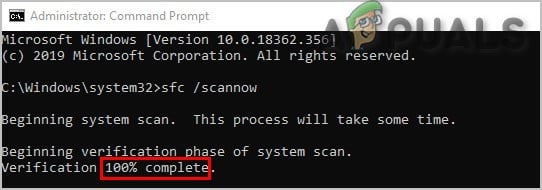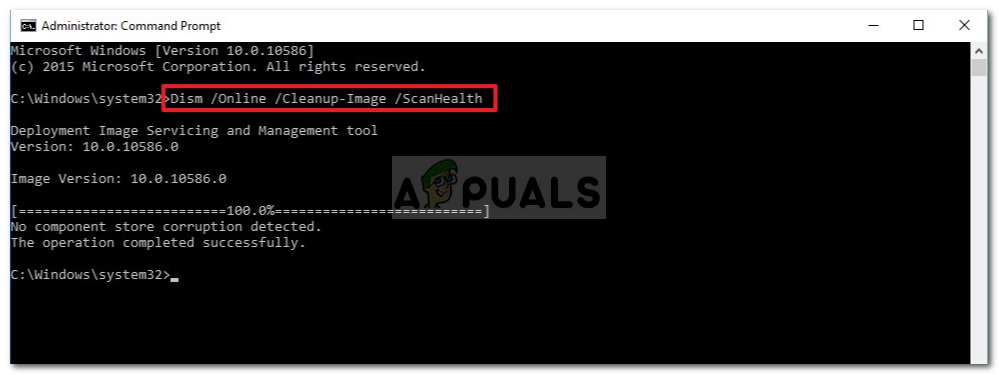After investigating this issue thoroughly, we’ve discovered that several different underlying causes are responsible for this “Unable to Start a DCOM Server” Error. Here’s a list of potential culprits that you should look for: Now that you are familiar with every potential culprit responsible for this issue, let’s go over each possible scenario and deploy the appropriate fix according to the topic at hand.
Patching the permission issue (QlikView users Only)
If you’re experiencing this issue while attempting to use QlikView, the first thing you should do is troubleshoot against a potential permission issue caused by a resource inconsistency. Note: If you’re not using QlikView, ignore this first method and move directly to the next one below. Since the problem is closely correlated with a resource issue, you should first make sure the QVB is correctly registered. Follow the instructions below to check if the QVB is correctly registered: Once this first part is done, follow the following instructions below to make sure the QulikView permissions are correct: If this method is not applicable, move down to the next potential fix below.
Repair the Office Suite installation
Suppose you’re noticing inside the Event Viewer that the problem is related to the Microsoft Office Hub. In that case, chances are you’re dealing with a corrupted Office installation – it’s much more common than you’d think. Most likely, these constant “Unable to start a DCOM Server” error entries are generated in the background by a sub-component of the office suite. After going through most of the documented cases, you might expect this issue to occur after the Antivirus suite ends up quarantining some files belonging to the Microsoft Office suite. Here’s an example of an Event where Microsoft Office is to blame for the error: If the error you’re experiencing is similar, follow the instructions below to repair the Office suite effectively and hopefully fix the issue permanently: If this method did not apply to your scenario or you’re still noticing new “Unable to start a DCOM Server” Event Viewer errors, start following the following steps below.
Grant Full Control to WscBrokerManager and WscDataProtection (if applicable)
Suppose none of the methods below have proven to be applicable. The extended Event Viewer error message related to the “Unable to start a DCOM Server” mentions WscBrokerManager or WscDataProtection. In that case, the issue is most likely related to a permission issue caused by Windows Security Center. Note: This is mainly reported for users using a 3rd party security suite and has just switched back to the default security suite (Windows Security). If the scenario described above is applicable, you should be able to fix the issue by using the Registry Editor to obtain complete control for the current account over both WscBrokerManager and WscDataProtection. Follow the instructions below to learn how to do so: If you’re still seeing new Events with the same DCOM error, move down to the following method below.
Remove the Firewall interference via Windows Terminal
This problem is also sometimes related to many firewall rules that get created by your active AV. Depending on your use case, you might find that these recurring DCOM errors might be generated when your system cannot clear deprecated firewall rules. Fortunately, this is an issue that you can resolve quickly with a series of commands that will delete these problematic Reg keys and fix the Unable to start a DCOM Server issue entirely. Here’s what you need to do: If the same DCOM error is still filling up your Event Viewer, move down to the next potential fix below.
Uninstall 3rd party antivirus suite
As it turns out, there is a specific overprotective Antivirus suite (3rd party) that has the potential of causing this issue whenever there’s a false positive that unwarrantedly keeps some system components from communicating with external servers. Unfortunately, if you’re suffering from this particular issue, there is no definitive fix, since thousands of potential scenarios might be responsible for this issue. In this case, the best thing you could do is to temporarily uninstall the overprotective AV suite and see if new instances of the ‘Unable to start a DCOM Server’ error are no longer generated in Event Viewer. Note: If you confirm that your 3rd party security suite was causing this issue, you can try reinstalling it or migrating to a more permissive option. Follow the instructions below to uninstall the overprotective 3rd party antivirus suite: If you were not using a 3rd party antivirus, or you already uninstalled your 3rd party suite, and you’re still dealing with the same kind of issue, move down to the next potential fix below.
Perform a clean boot procedure
As it turns out, an overprotective antivirus is not the only third-party component that might be responsible for this particular DCOM error. According to other affected users, an entire list of processes and startup services might be accountable for starting a DCOM Server error. Since there is no definitive list of 3rd party services, processes, and startup items that might be causing this issue, the best option of figuring out if a 3rd party item is causing the problem is to boot your PC in a clean boot state. If you manage to do this and ensure that there is no 3rd party item that is permitted to run, you’ll be able to tell if a conflicting app causes the problem or not. Follow these instructions to boot your computer in a clean boot state and ensure that only native WIndows processes and startup items will run with the next startup. Once you manage to boot in clean boot mode, access the Event Viewer (Windows key + R and type ‘eventvwr.msc) and see if there are any new instances of the DCOM error. If you still see new instances of the same error, move down to the next potential fix below.
Perform SFC and DISM scans
If you’ve come this far without a result, there’s a big chance that you’re dealing with some system file corruption that ends up generating these DCOM errors. In case you’re still constantly seeing new instances of the “Unable to start a DCOM Server” inside the Event Viewer, the next thing you should do is run a couple of built-in utilities capable of fixing the most common causes of system file corruption – SFC (System File Checker) and DISM (Deployment Image Servicing and Management). While SFC and DISM share some similarities, my recommendation is to run both in quick succession to improve your chances of fixing the corruption issue. Note: SFC retrieves healthy system files from a local folder while DISM uses Windows Update to download files that need to replace corrupted equivalents. Start by deploying an SFC scan from an elevated CMD prompt and see if the utility finds & fixes any system file corruption. Note: After you start this operation, it’s recommended that you don’t interrupt it (or close the CMD window prematurely) even if the tool looks like it froze. Eventually, you’ll get the success message when the operation is complete. After the DISM scan is complete, reboot your PC, then deploy a DISM scan after the next startup is complete. Note: Before you start this operation, make sure that you have a stable Internet connection. After the DISM command is completed successfully, reboot your PC again and see if the problem is fixed at the next computer startup. If the same ‘Unable to start a DCOM Server’ error is still occurring even after running both of these scans, move to the final potential fix below.
Repair install or clean install Windows 11
If running SFC and DISM scans didn’t help in your case, chances are you’re dealing with some system corruption that cannot be fixed conventionally. At this point, the only viable option is to replace every Windows file with a healthy equivalent that is not affected by corruption – when it comes to doing this, the easiest way is to go for a clean install. But before you go this route, keep in mind that you will lose any personal data currently stored on the OS drive. A better option in this case (if you have the time) is to go for a repair install procedure instead. This operation will allow you to keep all your files, applications, games, and even some user settings – it will only touch OS files.
Fix Windows Update Error 0XC19001E2 in Windows 10 (Fix)FIX: Windows Defender Error The service couldn’t be started Error code:…How to Fix ‘System 53 Error has Occured’ Error on Windows?[FIX] ‘An Error Occured while Trying To Copy a File’ Filmora Installation Error…

